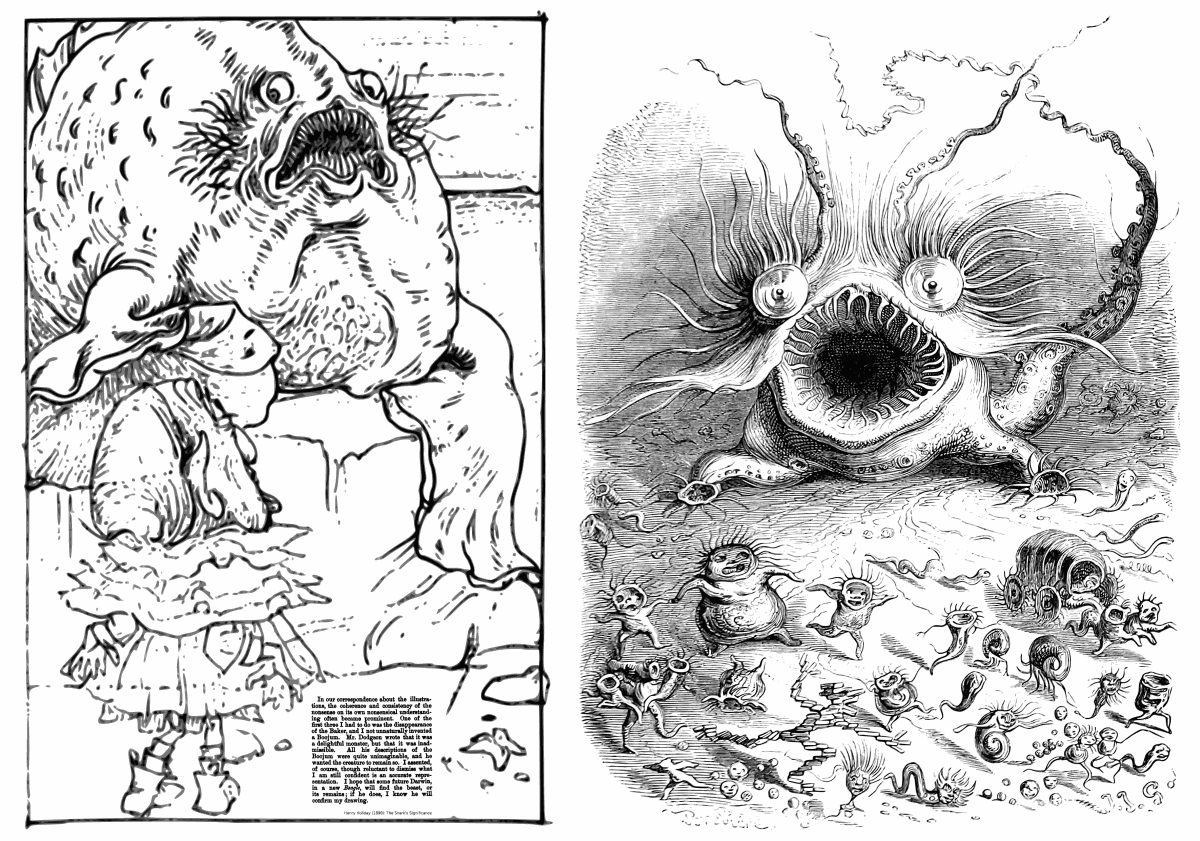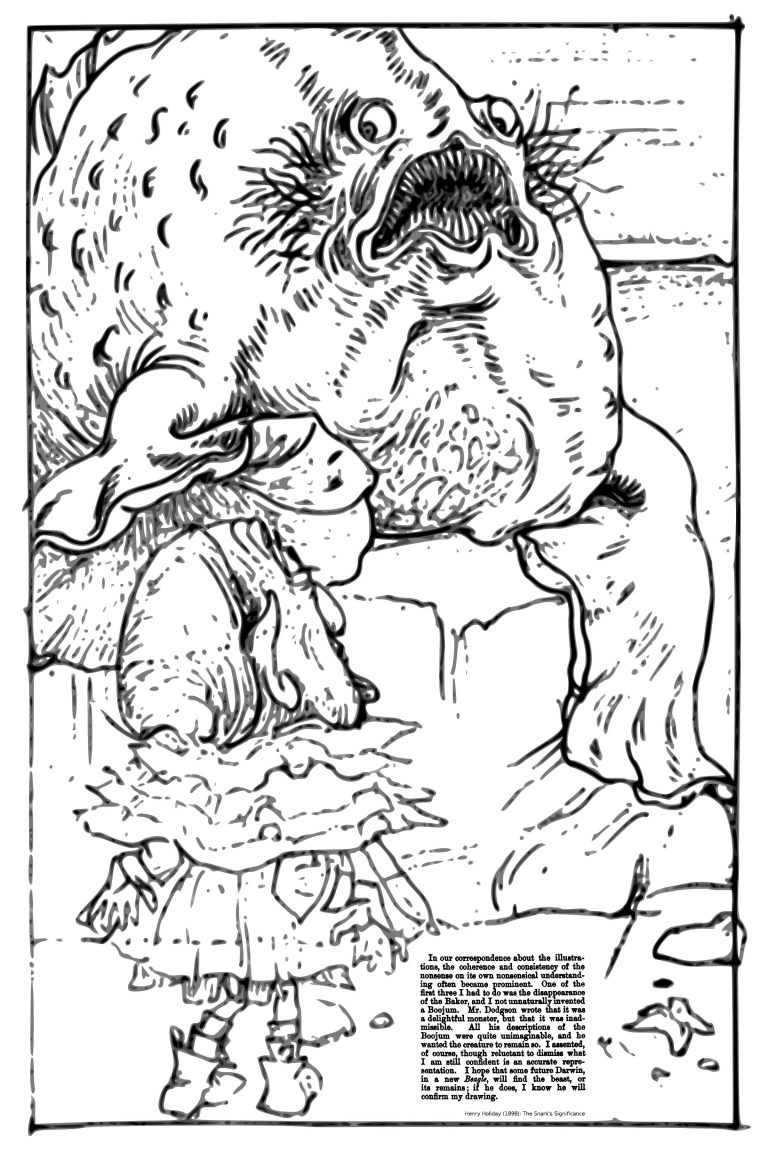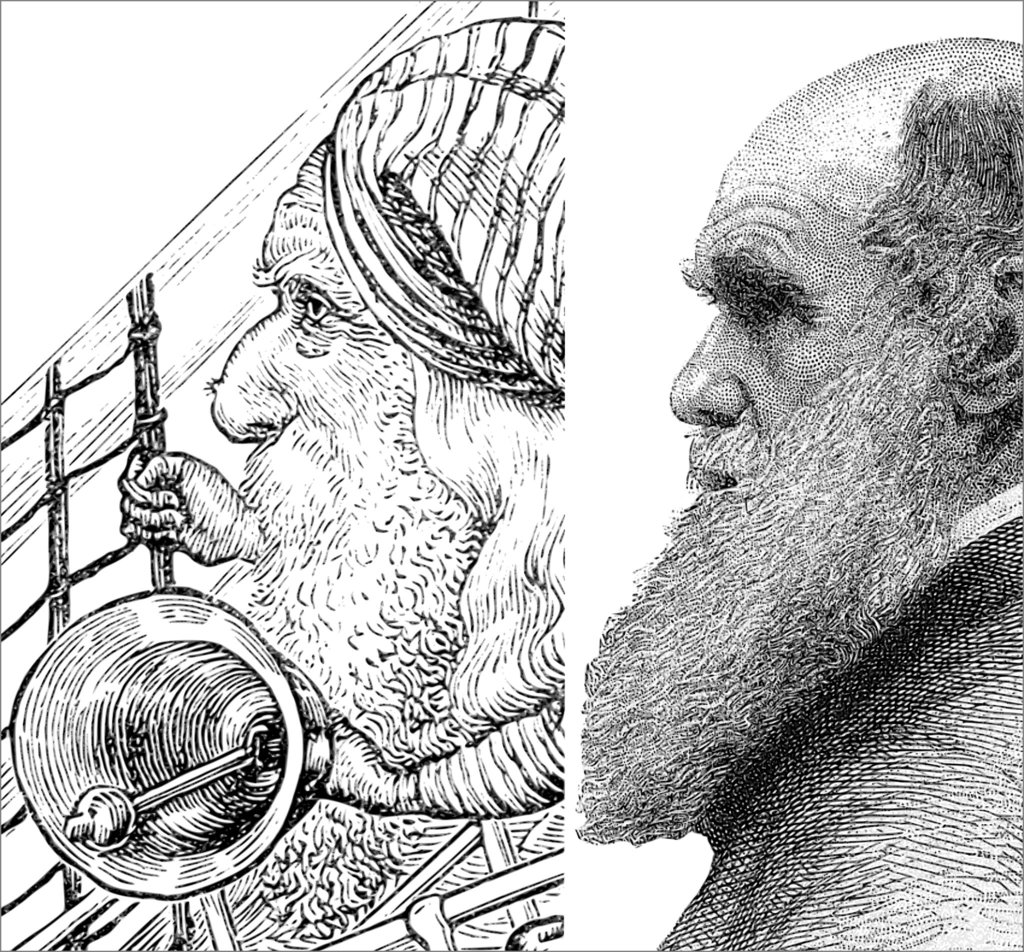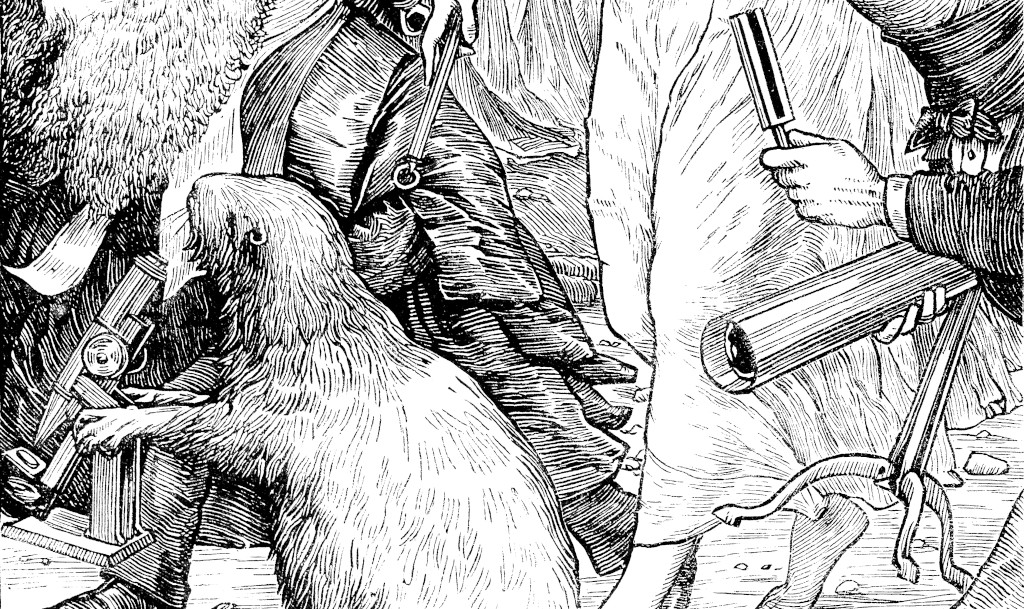Lewis Carroll’s wrote about The Hunting of the Snark:
As to the meaning of the Snark, I’m very much afraid I didn’t mean anything but nonsense. Still, you know, words mean more than we mean to express when we use them; so a whole book ought to mean a great deal more than the writer means. So, whatever good meanings are in the book, I’m glad to accept as the meaning of the book. The best that I’ve seen is by a lady (she published it in a letter to a newspaper), that the whole book is an allegory on the search after happiness.
So, the Snark isn’t nonsense after all. And it has at least one meaning also from the author’s point of view. I think that the tragicomedy is about how legitimate conflicts arising naturally during any search of “happiness” turn into nasty (and sometimes lethal) fights. An important issue addressed by The Hunting of the Snark could be the conflicts in the (Anglican) church from the early years of reformation up to the Oxford movement. But at the same time it also could be about how people dealt with scientific findings which challenged the belief in a omnipotent creator. In the Victorian era, Charles Darwin‘s findings were a big challenge to such beliefs.
[…] One of the first three [illustrations] I had to do was the disappearance of the Baker, and I not unnaturally invented a Boojum. Mr. Dodgson wrote that it was a delightful monster, but that it was inadmissible. All his descriptions of the Boojum were quite unimaginable, and he wanted the creature to remain so.
I assented, of course, though reluctant to dismiss what I am still confident is an accurate representation. I hope that some future Darwin in a new Beagle will find the beast, or its remains; if he does, I know he will confirm my drawing. […]
(Henry Holiday (1898): The Snark’s Significance)
What can science reveal of the nature of man and the universe of which it is a part? This is the quest of the Snark.
[…]
“But oh, beamish nephew, beware of the day,
If your Snark be a Boojum! For then
You will softly and suddenly vanish away,
And never be met with again.”
Anything that reveals of the nature of man and the universe contributes to scientists’ pursuit of happiness. Those, however, who twist the truth, will softly and suddenly vanish away. Unfortunately, their opponents also might meet the Boojum.
There is a good translation of Carroll’s long poem into Italian by Andriano Orefice, an Italian particle physicist. He linked the Snark hunting expedition to Charles Darwin‘s Beagle voyage. Here are my notes about his translation:
Il Covile, anno XII NO690, 2012-03-29,
ISSN 2279-6924
www.ilcovile.it/scritti/COVILE_690_Snark.pdf (snrk.de archive)
(or pg. 101 in www.ilcovile.it/raccolte/RACCOLTA_COVILE__3_Fine_e_popolare.pdf)
Translation of Lewis Carroll’s The Hunting of the Snark, 16 pages:
LEWIS CARROLL
LA CERCA DELLO SQUALLO
THE HUNTING OF THE SNARK
NELLA TRADUZIONE DI ADRIANO OREFICE
(http://www.researchgate.net/profile/Adriano_Orefice/info)
Un veliero: il brigantino H. M. S. Beagle. Lo comanda il bigotto Capitano Robert Fitz Roy. L’anno è il 1831. A bordo, un cervello esplosivo. Con un ritardo di due secoli sulla Fisica, sta per deflagrare il Galileo della Biologia. Le tappe successive: nel 1838 è completata la teoria della selezione naturale. Nel 1859 esce L’origine della specie.
Dissolvenza.
Quando torna l’immagine, è ancora una nave. Un veliero, naturalmente. Il Beagle riprende il mare? L’anno, è il 1874: Darwin è ancora vivo, vegeto e chiacchierato. […]
Translation:
A sailing ship: the brig H. M. S. Beagle. It is commanded by the bigoted Captain Robert Fitz Roy. The year is 1831. On board, a brain explosion. With a delay of about two centuries of Physics, it is shattered by the the Galileo of Biology. The following stages: In 1838 the theory of natural selection was completed. In 1859 comes the Origin of Species.
Fade-over.
When it returns into the scene, it is still a ship. A sailing ship, of course. The Beagle took to the sea again? The year is 1874: Darwin is still alive, well and chatty. […]
Remember where Henry Holiday mentioned Darwin?

You find Jean-Jacques Grandville’s Volvox (right image) in Scènes de la vie privée et publique des animaux; 1842. Republished in Public and Private Life of Animals, by P. J. Stahl (pseudonym of Jules Hetzel), illustrated by J. J. Grandville, and translated from the French by J. Thompson; 1877; London, S. Low, Marston, Searle, & Rivington, p. 273. (Grandville’s monster also appeared on the record cover of Queen’s I’m Going Slightly Mad.)
My thanks go to John Tufail for discovering the similarity to Henry Holiday’s Boojum.
2017-09-19, updated: 2025-09-27

 […] One of the first three [illustrations] I had to do was the disappearance of the Baker, and I not unnaturally invented a Boojum. Mr. Dodgson wrote that it was a delightful monster, but that it was inadmissible. All his descriptions of the Boojum were quite unimaginable, and he wanted the creature to remain so.
[…] One of the first three [illustrations] I had to do was the disappearance of the Baker, and I not unnaturally invented a Boojum. Mr. Dodgson wrote that it was a delightful monster, but that it was inadmissible. All his descriptions of the Boojum were quite unimaginable, and he wanted the creature to remain so. 
